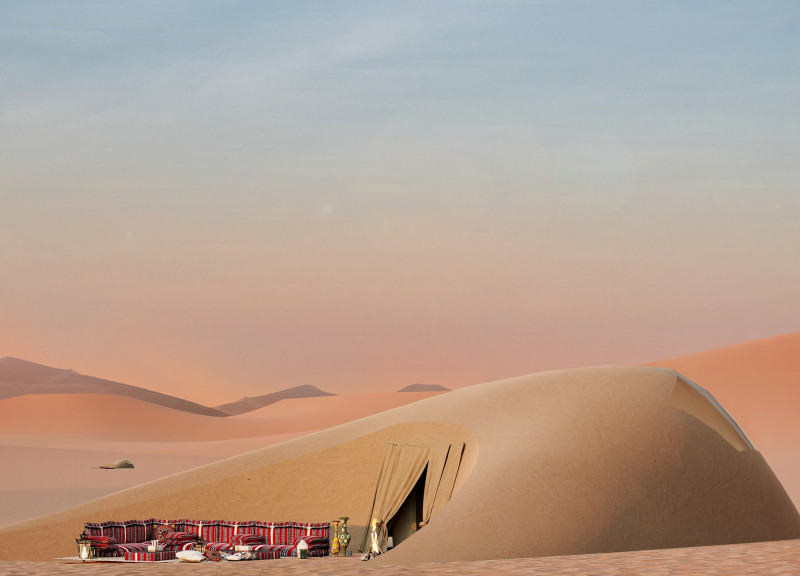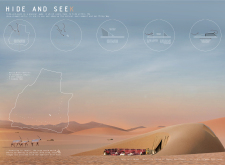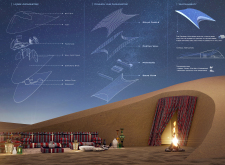5 key facts about this project
Hide and Seek is a design set in a unique desert landscape, focusing on the relationship between built structures and the environment. The project includes 17 standard lodges, 8 VIP lodges, and a common hub. Each unit is designed as an observation space, allowing users to interact with the rich ecology and the expansive view of the Milky Way. The overall design integrates well with the rolling sand dunes, enhancing the experience of those who visit.
Contextual Orientation
The placement of the lodges considers the direction of the wind, which affects user comfort and local wildlife. By aligning the structures with prevailing winds, the design minimizes unfamiliar odors that may disturb animals, particularly oryx, which navigate the landscape based on scent. This awareness of natural dynamics reflects a practical approach that enhances both human and ecological experiences.
Architectural Form
The shapes of the lodges are inspired by natural sand formations. Their U-shaped profiles blend into the surroundings, allowing the buildings to reflect the landscape rather than disrupt it. This design creates a visual connection with the dunes, promoting a sense of unity with nature. The curves and contours are not just aesthetic; they echo the environment, creating a familiar and inviting atmosphere for occupants.
Material and Structural Elements
Each lodge incorporates essential features that focus on functionality. Wall partitions organize the interior spaces, while skylights bring in natural light to create bright and open areas. The structures include integrated drainage systems and water tanks, addressing practical needs in a desert environment. The concrete base provides stability for the lodges, accommodating the shifting sands while ensuring durability. This careful choice of features showcases a design rooted in practicality and sensitivity to the setting.
Community Engagement
The common hub serves as a gathering spot for visitors, offering a space for social interaction. This area supports community building within the wider desert landscape. The design of the hub encourages engagement and connection, linking individuals while they enjoy the surrounding environment. Additionally, the use of solar panels indicates a focus on sustainability, harnessing renewable energy to support the community's needs.
The rooftops feature flowing contours that mimic the natural sand dunes, enhancing the visual relationship between the built structures and their surroundings. The design details highlight an understanding of the landscape, inviting users to explore and appreciate the environment fully. This attention to detail ensures that every aspect of the project reflects a deep connection with nature.






















































